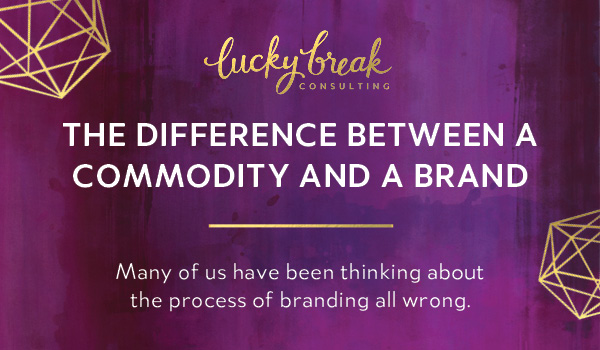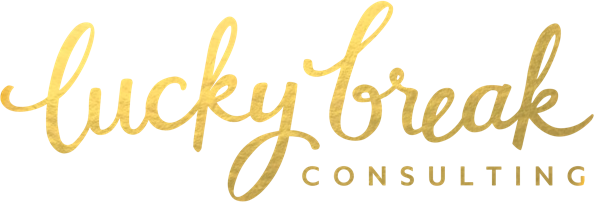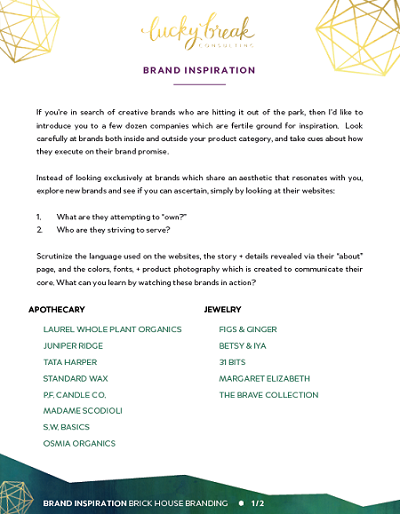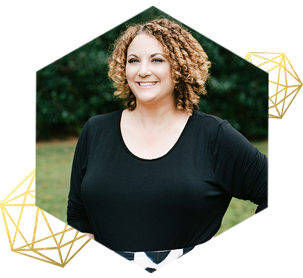
Many of us have been thinking about the process of branding all wrong.
We think our logo, color palette and font selection is what defines our brand. We mistakenly believe that the visual aesthetics that we’ve carefully constructed to represent us are what sets us apart in the marketplace. And while that’s certainly one piece of the puzzle, your brand’s visual identity is hardly the largest or even the most important piece.
At its core, branding is the process of understanding who you want to serve + how you want those people to feel and then working consistently + passionately to create a consistent emotional connection with that audience over time. So the first question to ask yourself in the process of branding your company is: how do you want your customers to feel? If you’re able to create and sustain emotional resonance, then your products enjoy the opportunity to go beyond mere commodities and transform into a true brand.
Commodities are products which can easily be substituted for one another. They’re items for which a demand exists, but no qualitative difference across a marketplace. Think: fresh corn, gasoline, steel beams and gold bars. We could buy one ear of fresh corn or another, but we’re not predicating that purchasing decision on loyalty to a brand. Conventional or organic? Sure. We assess the color and health of each ear, but sell me ABC corn or XYZ corn- I care not, so long as the price is right and the produce looks fresh.
In contrast, brands create differentiated products which are highly desired by their customer base. Their customers have some degree of brand loyalty, seeking out those specific goods in the marketplace. Brand customers are less likely to substitute products based on price + availability.
Did you catch that? Because it’s pretty damn important. Brand customers are less likely to substitute products based on price + availability. They don’t care that one product may be more readily accessible than their favorite brand. They’ll gladly trek to the market across town or patiently check their mailbox for a week, awaiting the delivery of a much beloved product. Fans in that customer base are no longer slaves to price, grounding each and every purchasing decision on which company can provide the cheapest widget. No, brand customers will gladly pay more to support companies and causes they believe in, that make them feel important or reinforce some aspect or another of their personal identity.
True Nike fans won’t purchase a pair of Adidas shoes, even if they’re on sale. Starbucks fans will drive eight more blocks, bypassing the Dunkin’ Donuts shop, in order to satiate their morning coffee fix. And in order to be successful in the long term, you and I have to discover how to make our handmade soap the soap of choice for the people at the farmer’s market on Saturday. We have to give them a reason to load the kids into the car seats and trek across town replenish their stock at premium pricing. We need to drill deeper into our jewelry, our stationery, our handbags, candles and ceramics to understand what we’re really selling, why it truly matters and how we can enrich the lives of the people we get excited to serve.
If you feel as though the current marketplace is growing uncomfortably + increasingly crowded, then it’s time to up your brand game. It’s time to think less about your logo and more about how you can create emotional resonance with the people you get out of bed for each morning.
Spend a few minutes today meditating on the three key questions I recommend asking yourself to get at the very heart of your brand:
1. Who do I want to serve?
2. How do I want them to feel?
3. What will I do to enrich their lives?
The answers to those three queries guide everything else your company will do from product design + development to pricing. And they’ll inform what fonts, colors and imagery you select to represent your brand. But that’s a story for another day…
Click here to download my “Brand Inspiration” worksheet
If you’re in search of creative brands who are hitting it out of the park, then I’d like to introduce you to a few dozen companies which are fertile ground for inspiration. Click the image above to download my hyperlinked list of brands to watch- hover over any brand name in green, then click to be whisked right over to their front door. Look carefully at brands both inside + outside your product category, and take cues about how they execute on their brand promise.
Instead of looking exclusively at brands which share an aesthetic that resonates with you, explore new brands and see if you can ascertain, simply by looking at their websites:
1. What are they attempting to “own?”
2. Who are they striving to serve?
Scrutinize the language used on the websites, the story + details revealed via their “about” page, and the colors, fonts, + product photography which is created to communicate their core. What can you learn by watching these brands in action?
If you’re interested in drilling deeper into your brand to create brand loyalty and passionate fans, raise prices and to create a sustainable business, then I’d be honored to welcome you into Brick House Branding. Its maiden voyage is happening this month and the reviews have been so positive and the demand so high, that I’ve decided to teach the series again in June + July. Registration opens Monday, May 26th and seating is very limited. Every last spot was claimed within 3 days last time, so I recommend securing a spot as soon as enrollment opens if you’re interested in building a stronger brand this summer.





